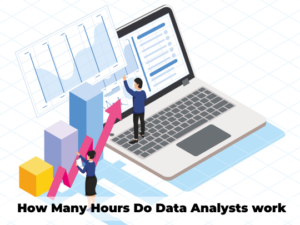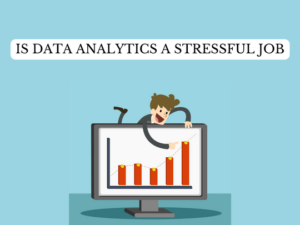There are some essential tools that can be used in data analytics. The two popular ones are Python and Excel. Therefore, looking at the two and seeing how they work in different dimensions is important. Only in this way can we take steps and choose the best one.
In the business world, excel is the most widely used spreadsheet. It is standard and is utilized in so many data analysis tasks. However, it also has limitations.
We also have Python, a programming language used in data science and data analysis. Comparing these two can help us pick one over the other. It can also form our decisions to know which option is best suited for specific applications and uses.
Use
Excel is widely used for purposes of analysis and data management. Many people in business have an easy time and are familiar with Excel, so they use it for different tasks. Its use includes basic calculations, creating timelines and schedules, and managing lists. The tasks need very minimal knowledge. Excel is easy to learn as well.
Enroll in this Data Analytics Training In Pune to start your journey.
Excel can be downloaded, and within a few minutes, you will be already writing formulas following tutorials. You can add figures, make charts, and find averages. This tool suits those who like working with data or tracking schedules without deepening into analytics.
The greatest task for a beginner is creating a conducive environment to use Python in. You need to use a terminal window or command prompt to download Python. Statistical libraries are needed to facilitate pip installs.
Learn the core concepts of Data Analytics Course video on Youtube:
You take some time to get familiar with data wrangling and manipulation using code. Its complexity makes it less used by casual users. However, we still need to appreciate that more companies are choosing cloud-based infrastructures like google cloud for data storage and Amazon web services. Cloud storage and big data are trends making more people up skill knowledge in querying and programming skills to work in companies driven by data.
The good thing about Python is that there are cheap training programs that you can take advantage of and many free resources. So anyone passionate about learning can.
Excel’s GUI is friendly compared to Python, which is more daunting. However, online courses and tools slowly break down the boundaries between the two. Therefore, the choice between these two at this level depends on what you intend to use them for.
Big data and scalability
If you need to handle multiple and larger data sets, Python should be your pick as it has some significant advantages you cannot overlook. Excel, on the other hand, can handle little data at a time. Having more open tabs on the workbook means more challenging time management. More open tabs mean slower operations. This causes the program to crash, and you could lose unsaved work. You cannot handle too many entries and tables with Excel.
With Python, files can be saved separately. You can also write code while another file interacts with data. The advantages here include stability even as you simultaneously handle a lot of data and computational speed.
It can be frustrating when working with rows of data and tables in Excel. This would mean navigating up and down rows or creating formulas on different sheets. Even with too much work, you cannot see the work done already in the analyses. Furthermore, if a mistake is made, returning to fix it is not possible.
In Python, columns and row numbers only affect a little. This is because data in the interface is not being interacted with. It is possible to visually check and access sections of the data frame if there are areas that interest you that need to be checked without loading the whole data frame. Dealing with many tables and sheets in Python is easier because you can join or merge data easily.
Excel is a powerful tool. However, you need Python to upgrade your data analytics workflow because analytics, wrangling, and extracting data can be integrated into a single environment. Your work can be shown in containers, making fixing issues and mistakes much easier. You need Python when handling many data sets and big data. In this case, Python wins.
Automation capacities
In the present world, automation is essential. Automation can be beneficial in clearing up all those repetitive tasks that require so much work. Many businesses are data-driven today, meaning analysis and reporting are helpful in different roles. Analyses and reports may cover a lot of data and tables, which can take time.
When you pick Python, you can easily automate work for easy replication. Consider making monthly reports with different sales performance breakdowns. This could mean 10 charts. If we want to remake the performance breakdown using Excel every month, we would need to pull the data and create 10 charts or tables, then copy them to make a presentation on PowerPoint. The main thing here is that this process would have to be repeated every month. Doing this creates room for human errors.
Python makes it easier since you can connect to a database directly. You can then write your 10 queries or code that would manipulate and aggregate the data to help create all sorts of views needed. Different libraries can help with data visualization. Programs can be coded to get data from the database at a specified time to update the analysis. Once a notebook is created, you can run it, and all the charts and data will be updated and created automatically. Python saves what would have been hours of hard work and improves workers productivity.
Instead of dealing with Excel reports every month, the job can be automated using Python so that everything gets done and updated with a simple push of a button. You can also share the Python code to make tracking and modifying changes easier for teammates. In this case, Python wins.
Data Analytics Placement Success Story
Conclusion
When picking Excel or Python, we can consider many other things, including data connectivity. Considering all factors, we confidently say Python is the best option for data analytics. We live in a data era and should consider how much data we want to process and how much convenience and time-saving matter. To be more productive, we need to embrace Python.
Browse Other Courses
- Artificial Intelligence Course in Pune
- Business Analytics Course in Pune
- Cloud Computing Course in pune
- Cyber Security Course in Pune
- Data Analytics Course in Pune
- Digital Marketing Course in pune
- Ethical Hacking Course in Pune
- IoT Certification Course Training in Pune
- Machine Learning Course in Pune
- PMP® Certificate Course in Pune
- Python Course in Pune
- Tableau Course in Pune
Navigate to Address:
360DigiTMG – Data Analytics, Data Science Course Training in Pune
No. 408, 4th Floor Saarrthi Success Square, near Maharshi Karve Statue, opp. Hotel Sheetal, Kothrud, Pune, Maharashtra 411038
089995 92875
Get Directions: Data Science Training




